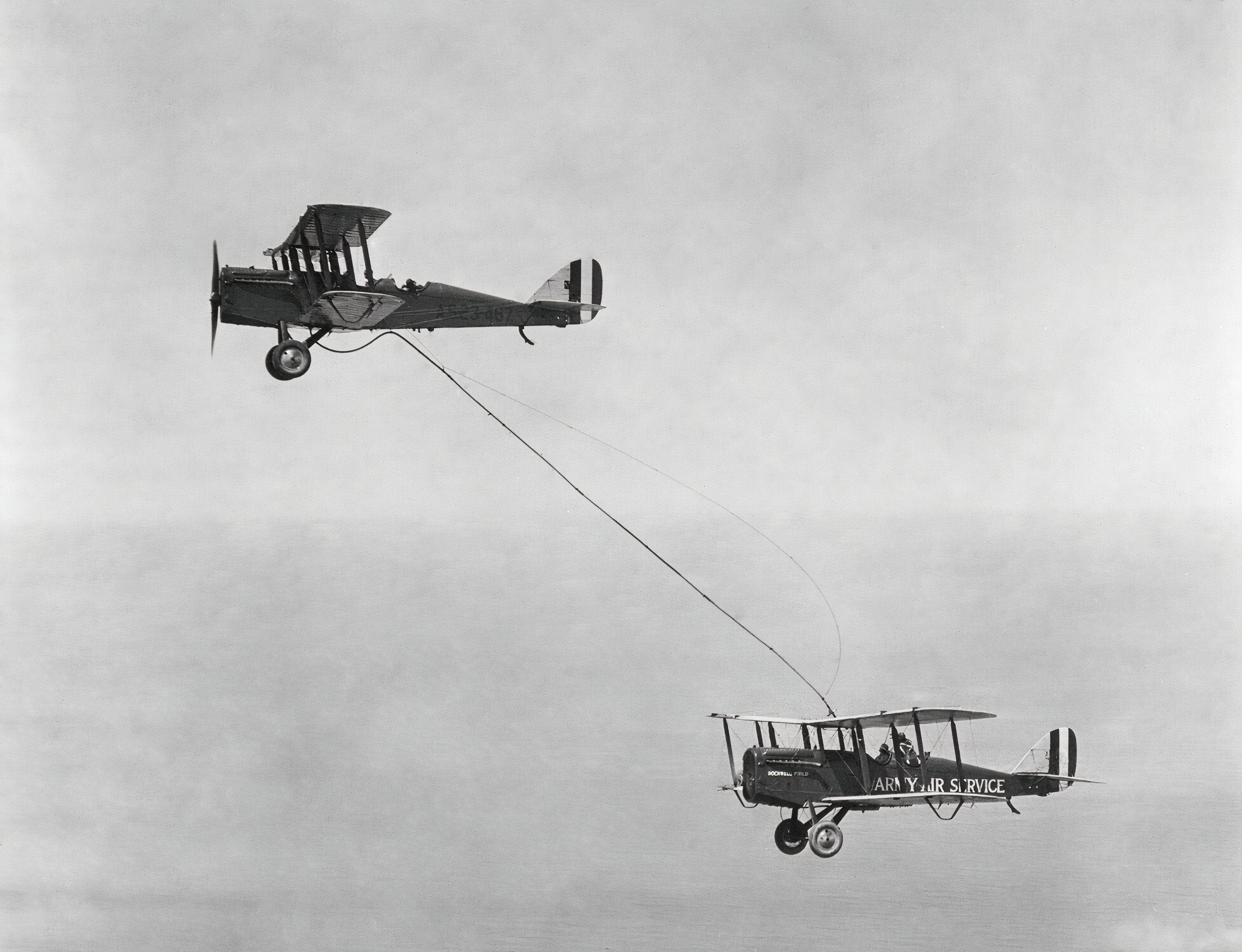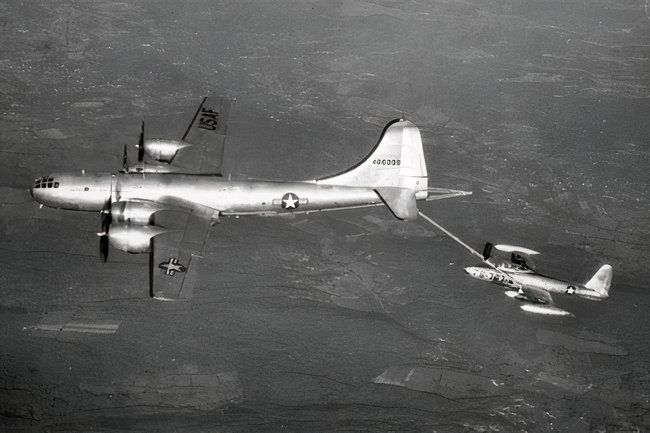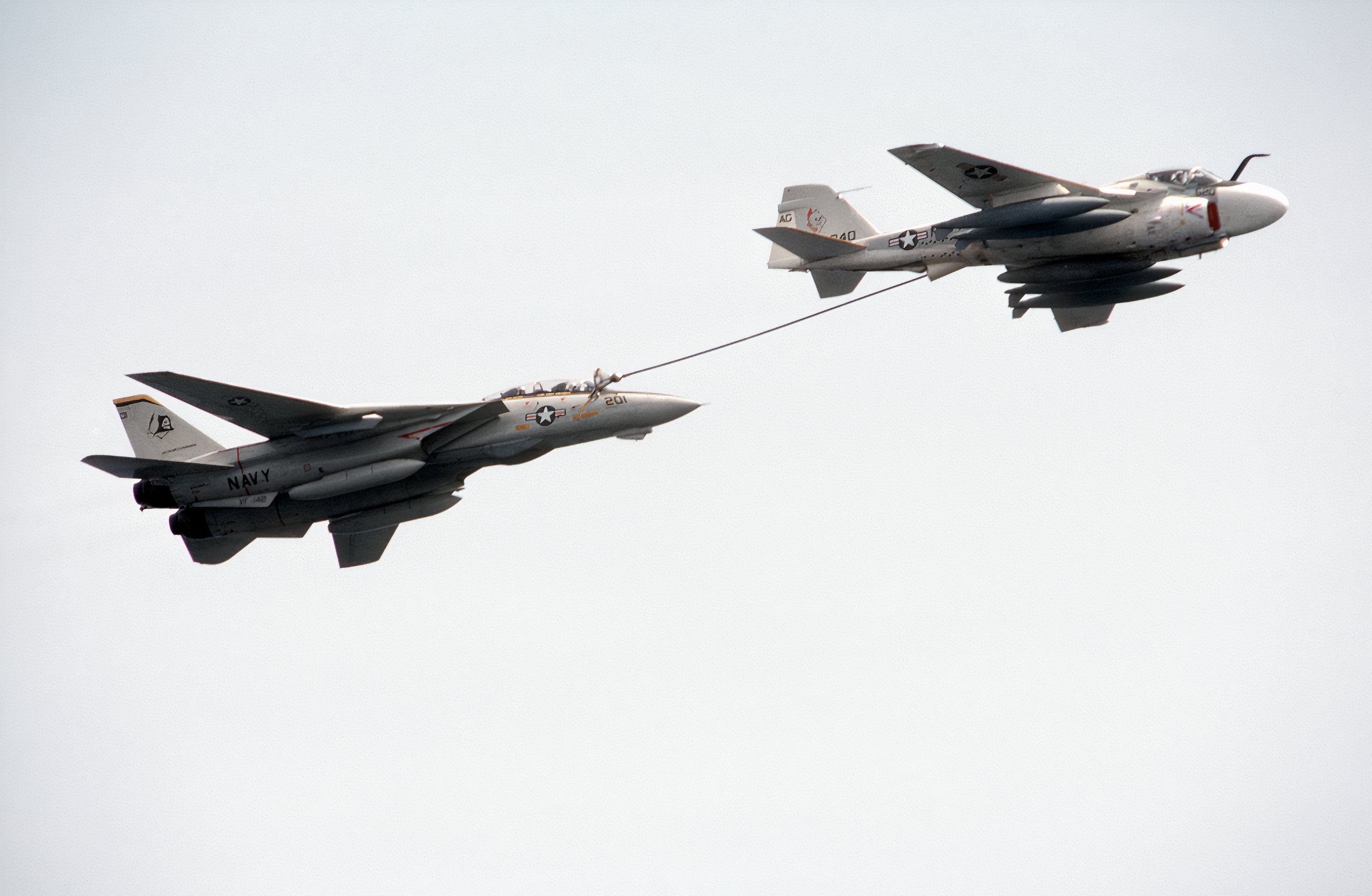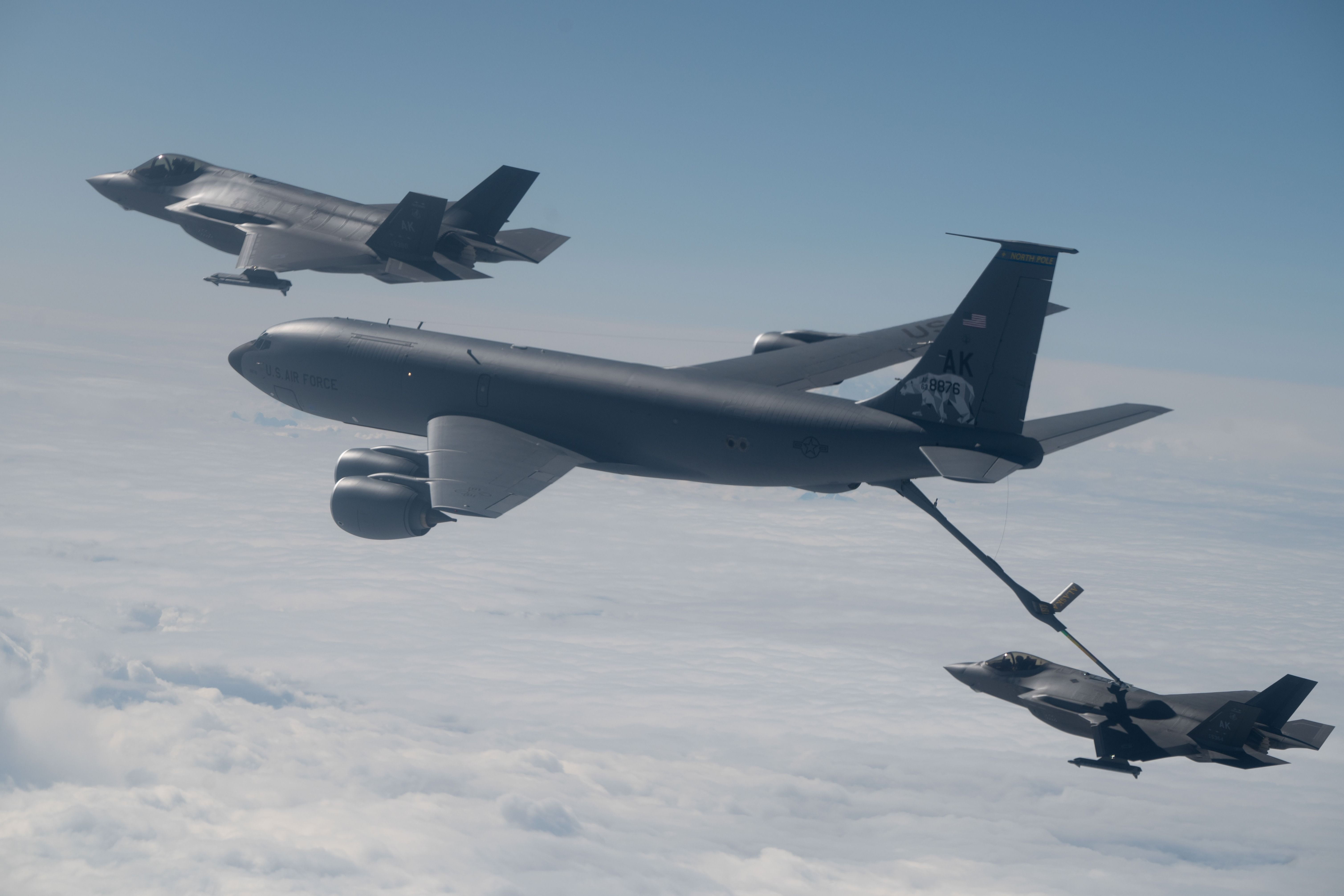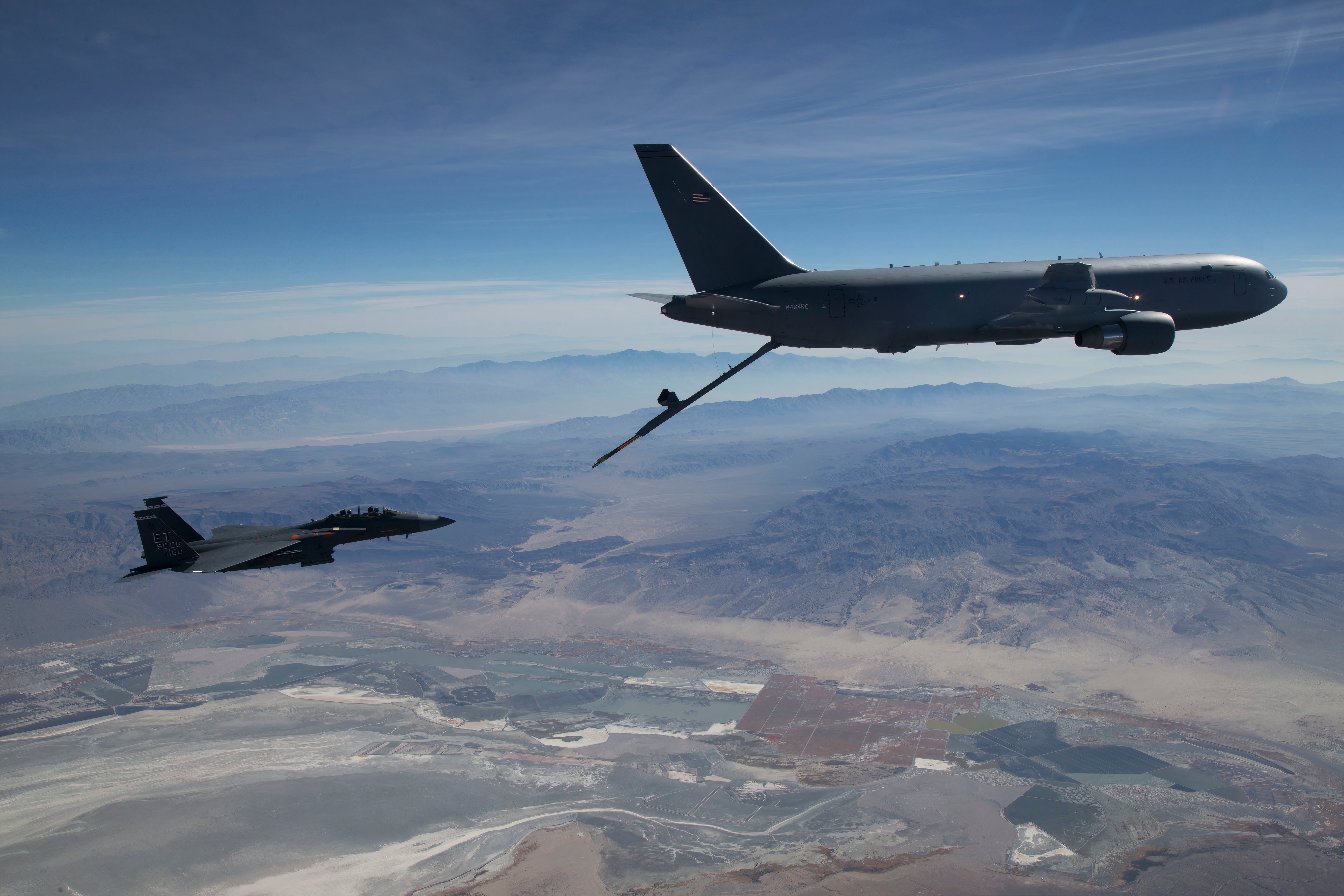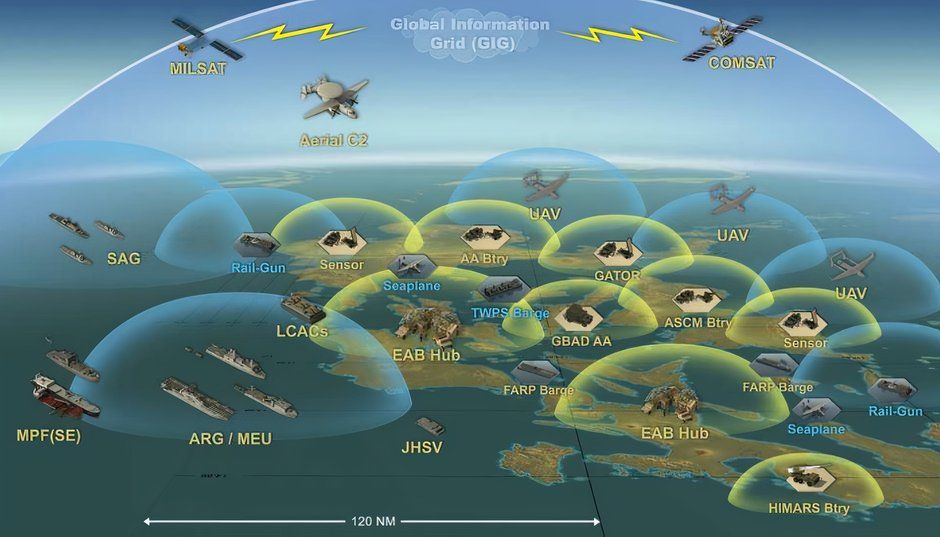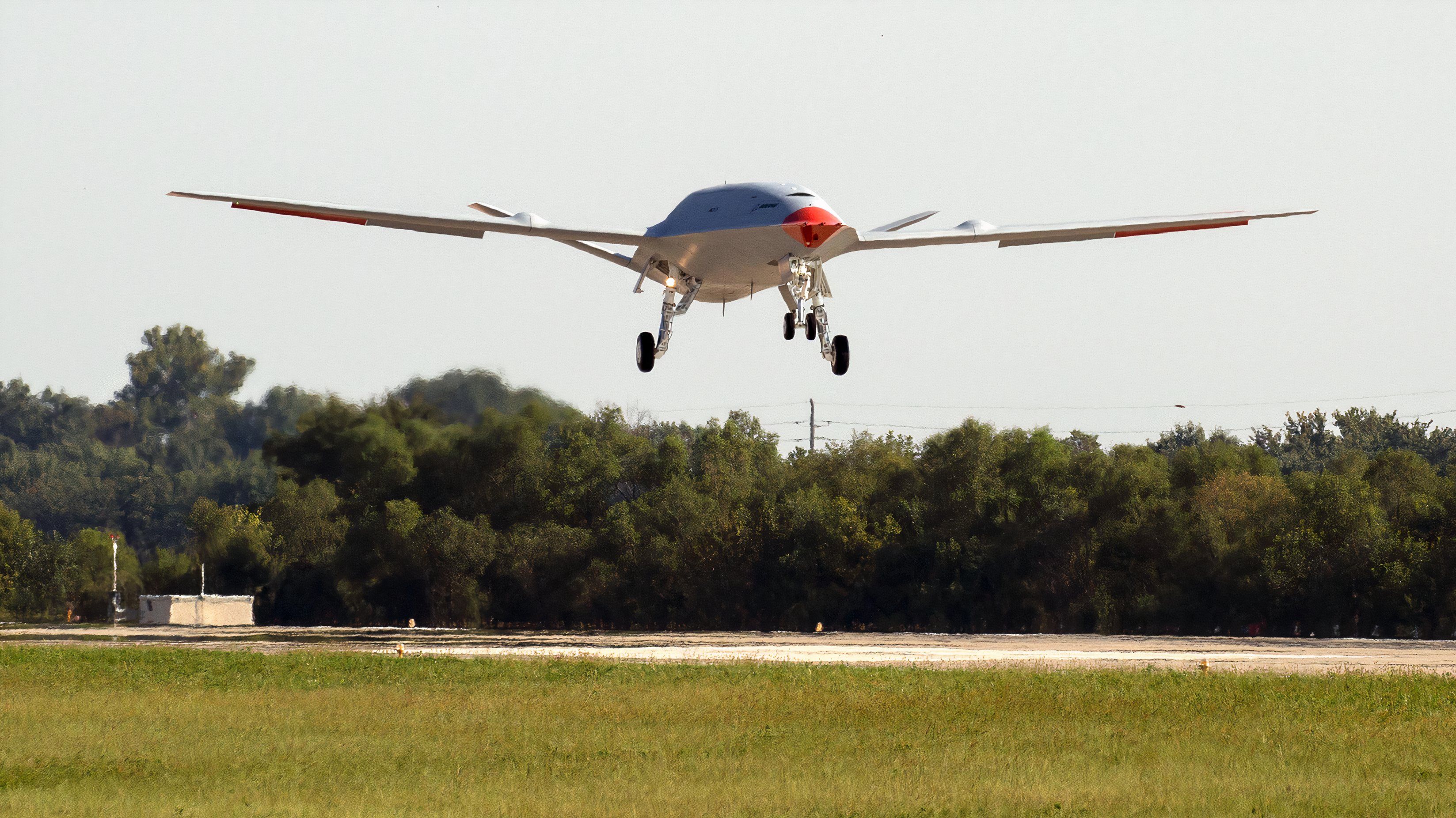Pioneered by the U.S. Army Air Corps in the early 1920’s, aerial refueling has been a staple of U.S. military operations since the Vietnam War. This capability is so important, that combat operations and the U.S. military and its global logistics network would be unable to function without it. However, this crucial capability would be under threat in a U.S. – China War.
Aerial refueling, a necessity for the U.S.’ global mission
Aerial refueling is a crucial aspect of military operations worldwide, and it is a vital force multiplier. The U.S. military began experimenting with aerial refueling in the early 20th century, when so many other components of modern warfare were in their infancy.
Operational aerial refueling has evolved from retrofitted B-29 bombers carrying fuel, to highly sophisticated, purpose-built aircraft that are capable of carrying over 200,000 pounds of fuel. These aircraft extend the range, speed, lethality, versatility and operational tempo of the U.S. military’s combat aircraft.
A brief look at early aerial refueling
The first aerial refueling
On June 27, 1923, at an altitude of approximately 500 feet (above what is now Naval Air Station, North Island), a U.S. Army, de Havilland DH-48 tanker lowered a hose for an air crew member on a counterpart DH-4B to grab and initiate the refueling process. This was the world’s first aerial refueling.
The first combat aerial refueling
By the Korean War, it became painfully obvious that aerial refueling was a necessity, as the United States Air Force
(USAF) conducted the majority of the defensive air operations for South Korea from Japan.
According to USAF historian Richard K. Smith:
“The Air Force conducted most defensive air operations for South Korea from Japan. It was some 130 nautical miles nm from bases in southern Japan to Pusan and 175 to 300 nm to targets on the North Koreans’ line of advance 33 along the Seoul-Taejon-Taegu axis. It was 540 nm from U.S. Air Force bases near Tokyo to Pusan, and some 600 nm to Seoul and targets along the 38th parallel.”
Fortunately for the USAF, they had been experimenting with retrofitted B-29 Superfortresses, these aircraft had been reconfigured as tankers and redesignated as KB-29’s. One such made history as being party to the first combat air refueling.
On July 6, 1951, three RF-80’s took off from Taegu, South Korea and linked up with a tanker off short of Wonsan, North Korea. Following the refueling, which featured a boom (as seen above), the RF-80’s photographed targets in North Korea. Once the mission was completed, they safely returned to base. This pivotal moment fully committed Strategic Air Command (and the USAF in general) to the ![]() Boeing
Boeing
refueling method utilizing a boom for fuel transfer.
Dependence upon aerial refueling and the Vietnam War
By the time the Vietnam War rolled around, refueling was a must, as aircraft fuel consumption increased. This was due to aircraft weight, increased power of the jet engines, increased payload of the fighters and bombers and variables related to combat. For these reasons, aerial refueling became a regular part of U.S. military air operations.
Aircraft launched from the carriers in the Gulf of Tonkin were accompanied by tankers to top-off their tanks before engaging their targets.
As stated by Smith, as USAF or Navy aircraft (such as the F-105D and the F-4) headed to Hanoi and its environs “…they had to be refueled simply to return to base; and after taking evasive action in the target area, going to afterburner for too many minutes, fighting enemy MiG interceptors, and getting holes shot in their fuel tanks, poststrike refuelings were also necessary.”
For naval refueling, the Douglas
KA-3 was used, later the KA-6 entered into service (this was an A-6 intruder with refueling capabilities). Aircraft launched from the carriers in the Gulf of Tonkin were accompanied by tankers to top-off their tanks before engaging their targets. As a contingency, tankers orbited the carriers in the event that a returning aircraft was nearly out of fuel or missed the arresting cable and required a second attempt at landing.
Present day aerial refueling needs in light of the China challenge
U.S. military air power is greatly reliant on aerial refueling for its military operations. Presently, the USAF Air Mobility Command operates the KC-135 and the KC-46A as its workhorse refueling aircraft.
Presently there are 396 KC-135 Stratotankers and 179 KC-46A’s in service; in addition to providing refueling for its own aircraft they provide refueling for U.S. Navy and Marine Corps aviation. These facts are well-known to the military planners of the Chinese military (PLA will be used an umbrella term for their military branches).
KC-135 Stratotanker
|
Specifications |
Data |
|---|---|
|
Primary Function |
Aerial refueling and airlift |
|
Prime Contractor |
The Boeing Company |
|
Power Plant |
CFM International CFM-56 turbofan engines |
|
Thrust |
21,634 pounds each engine |
|
Wingspan |
130 feet, 10 inches (39.88 meters) |
|
Length |
136 feet, 3 inches (41.53 meters) |
|
Height |
41 feet, 8 inches (12.7 meters) |
|
Speed |
530 miles per hour at 30,000 feet (9,114 meters) |
|
Ceiling |
50,000 feet (15,240 meters) |
|
Range |
1,500 miles (2,419 kilometers) with 150,000 pounds (68,039 kilograms) of transfer fuel; ferry mission, up to 11,015 miles (17,766 kilometers) |
|
Maximum Takeoff Weight |
322,500 pounds (146,285 kilograms) |
|
Maximum Transfer Fuel Load |
200,000 pounds (90,719 kilograms) |
|
Maximum Cargo Capability |
83,000 pounds (37,648 kilograms), 37 passengers |
|
Pallet Positions |
6 |
|
Crew |
Three: Pilot, Co-pilot and boom operator. Some missions require the addition of a navigator. |
|
Aeromedical Evacuation Crew |
A basic crew of five (two flight nurses and three medical technicians) is added for aeromedical evacuation missions. |
|
Unit Cost |
$39.6 million (fiscal 98 constant dollars) |
|
Date First Deployed |
August 1956 |
|
Inventory |
Active duty, 153; Air National Guard, 171; Air Force Reserve, 72. |
Photo: U.S. Air Force
…the PLA could use its fourth and fifth generation fighter aircraft, its growing fleet of destroyers or land based anti-aircraft batteries to target and neutralize U.S. tanker aircraft.
According to the Hudson Institute, as part of its military expansion, the “PLA fielded a sophisticated overlapping network of passive and active sensors across domains that can detect high-signature aircraft, such as tankers, at a great distance from Chinese territory.”
In such a scenario, the PLA could use its fourth and fifth generation fighter aircraft, its growing fleet of destroyers or land based anti-aircraft batteries to target and neutralize U.S. tanker aircraft.
The U.S. military certainly does have a tremendous amount of highly destructive options with regard to targeting and degrading PLA infrastructure, however, the fact remains that a war in the South China Sea area would be highly contested and very challenging.
KC-46A Pegasus
|
Specifications |
Data |
|
Primary Function |
Aerial refueling and airlift |
|
Prime Contractor |
The Boeing Company |
|
Power Plant |
2 Pratt & Whitney 4062 |
|
Thrust |
62,000 lbs. – Thrust per High-Bypass engine (sea-level standard day) |
|
Wingspan |
156 feet, 1 inch (47.5 meters) |
|
Length |
159 feet, 2 inches (48.5 meters) |
|
Height |
51 feet, 9 inches (15.5 meters) |
|
Maximum Takeoff Weight |
415,000 pounds (188,240 kilograms) |
|
Fuel Capacity |
212,299 pounds (96,297 kilograms) |
|
Maximum Cargo Capacity |
65,000 pounds (29,484 kilograms), 58 passengers |
|
Pallet Positions |
18 pallet positions |
|
Air Crew |
15 permanent seats for aircrew, including aeromedical evacuation crew |
|
Aeromedical Evacuation Crew |
Expected to add a basic crew of five (two flight nurses and three medical technicians) for aeromedical evacuation missions. Medical crew may be altered as required by the needs of patients. |
Photo: U.S. Air Force
Distributed Forces as a strategy
Given the level of threat that the PLA brings to the table, the U.S. military is planning to confront China with distributed forces.
The reason behind this, is that large bases and large unit operations provide the PLA with targets that are easier to engage, attack and destroy. With U.S. military forces distributed more widely on smaller islands, in and around the South China Sea, they will be much more difficult to track and attack.
Photo: Department of Defense
While this is true, distributed forces will require increased sustainment support, increasing the dependence on aerial refueling for supporting aircraft. Therefore, the USAF and naval tanking aircraft will be in greater demand, putting increased stress on their airframes and exposing them to increased threat of interdiction.
A possible solution: MQ-25 Stingray
The MQ-25 has a 15,000-fuel capacity and the ability to supply four to six aircraft at a range of 500 nautical miles.
With the Navy’s carriers farther away from the South China Sea (due to the PLA’s vast missile arsenal), and the USAF, Army and Marine Corps operating from distributed bases, the
MQ-25 Stingray
drone may be a stopgap solution.
The MQ-25 has a 15,000-fuel capacity and the ability to supply four to six aircraft at a range of 500 nautical miles. Its smaller profile will present a decreased radar cross section makes it harder to target than a larger slower USAF tanker. An additional benefit of deploying these refueling drones would be that the Navy could greatly reduce its use of the F/A-18E/F Super Hornet in its tanker role.
Photo: U.S. Navy
With its tanker role, 20 percent of the carrier air wing’s Super Hornet sorties are being allocated to refueling duties. This not only takes away from possible combat roles, but it also increases their airframe fatigue due to its heavier configuration when it is being launched from the flightdeck.
As stated by the Hudson Institute, the Navy is planning to acquire a total of 72 MQ-25A’s and each carrier air wing with four of these drones. What is more, the MQ-25’s capabilities are already proven, as it has already refueled a variety of aircraft including the E-2 Hawkeye, F/A-18 Super Hornet and the F-35C (the carrier based variant).
Photo: U.S. Navy
However, with the distributed nature of a potential war with China, a greater number would be needed, additionally the USAF would need to invest in this platform or something similar.
Aerial refueling and the future
Until the USAF goes totally green and has its entire fleet on battery-power, equipped with stealth solar panels for charging in-flight, tankers will maintain their crown and remain the gold-standard for inflight fuel replenishment.
That said, in a potential conflict with China, the ability to carry out aerial refueling in and around the South China Sea will be severely stressed, and fraught with peril. China maintains a robust missile defense and sensor network tailor-made to track and engage the U.S. military operating within its perceived sphere of influence.
Thus, it is of great importance for the USAF and Navy to invest in systems like the MQ-25 Stingray. This drone will give these two branches the ability to more easily refuel within China’s missile umbrella, and extend and maintain operations against the PLA without risking the larger tankers or their crews.


